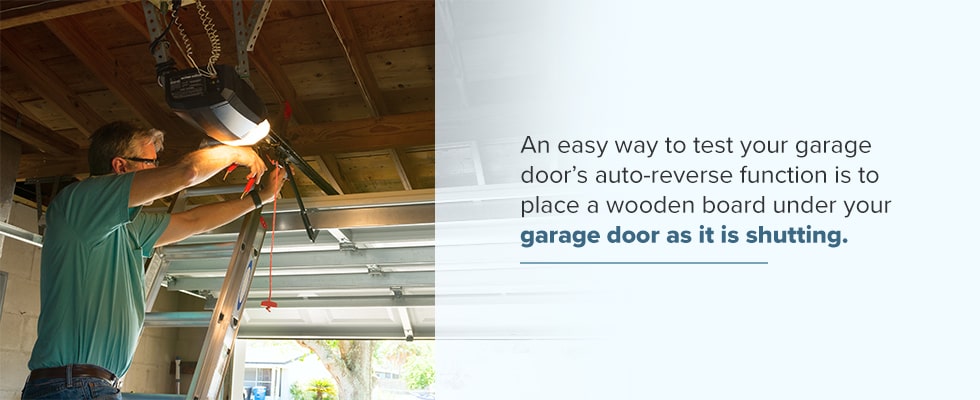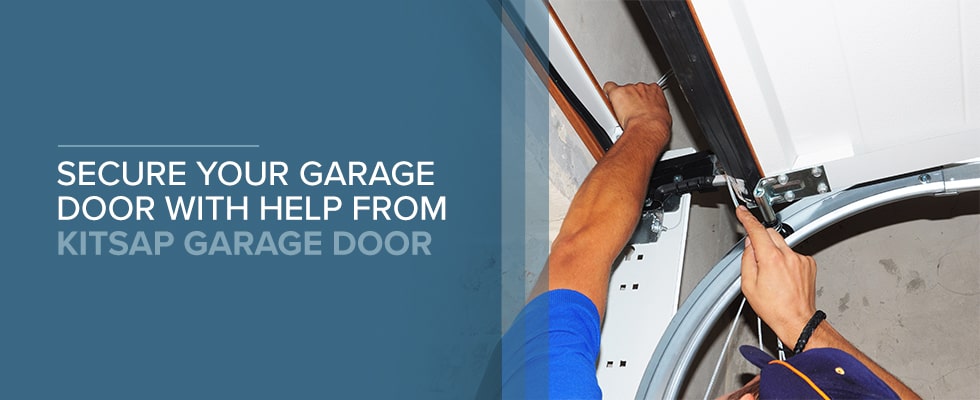
Garage Door Safety Measures
Most modern homes have some type of garage door. Garage doors keep your vehicles and belongings safe from the elements, animals and anything else that may be potentially damaging. Though garage doors are incredibly common, many people are unaware of all the measures they must take to ensure proper garage door safety. In this article, we’ll provide you with a variety of handy garage security tips to keep your garage safe.
1. Regularly Change Your Opening Code
If your garage door has an opening code, it is critical that you change that code on a regular basis. Approximately 9% of home break-ins happen when thieves get access to the house through the garage. Changing your code will reduce the probability of someone else learning or guessing it and entering your garage without your knowledge.
Here are some general guidelines for changing your garage door’s opening code:
- First, reset the garage door motor. Typically, there is a “reset” button located on the motor and by pressing the reset button, the garage door will forget the previous code.
- After you have reset the motor, enter your new code on the keypad. It’s best to set a new code that’s different from the previous one. Also, be sure to pick a code that you will remember.
- On many modern keypads, a light will turn on indicating that the motor has accepted the new code. Once you have selected a new code, reprogram any garage door openers you may have so that you can remotely open the garage door.
2. Check The Safety Sensors Often
Safety sensors are a vital part of garage doors. Safety sensors make automatic garage doors possible, and they can stop the door from closing if anything is in the way of the sensor. To properly secure your garage and ensure garage door safety, do a routine check of the safety sensors on a regular basis.
Garage door safety sensors operate using a resource called a “photo eye.” The photo eye is an infrared sensor on the side of garage doors. If something obstructs the infrared beam coming from the photo eye, the garage door will immediately stop closing. To ensure proper functioning, be sure to clean the photo eye so the infrared beam has a clear line of sight.
3. Always Know Where Your Garage Door Opener Is Located
Many people leave their garage door openers in their car — however, if your car is unfortunately broken into, keeping your opener in the car means the thief can take it as well. To avoid losing your opener, always bring it inside your house or put it in a location that you are certain is secure.
4. Unplug The Garage Door Opener When You Are On Vacation
If you’re going on vacation or leaving home for a couple of days, be sure to unplug the garage door opening unit. By unplugging the door opening unit, you can secure your garage and garage door.
To unplug your door opening unit, follow these steps:
- The first step is to close the garage door. Though the opening unit can be unplugged while the door is open, it is easier and safer to do so when the garage door is completely closed.
- Next, pull the emergency release. By pulling the emergency release, the garage door will be disengaged from the automatic opener.
- After you pull the emergency release, you will be able to manually open and close the door.

5. Become Familiar With Your Garage Door’s Automatic Reverse Feature
Since 1991, all garage doors have been built with an automatic reverse feature. If something gets in the way of the photo eye sensor, the auto-reverse will activate and the garage door will reverse its path. Garage doors can cause serious damage if they aren’t able to reverse. An estimated 30,000 injuries involving garage doors occur every year, some of them involving children caught under a door that can’t reverse due to a blocked sensor.
An easy way to test your garage door’s auto-reverse function is to place a wooden board under your garage door as it is shutting. Once the board is moved in the path of the infrared beam, the garage door will reverse course if the auto-reverse is functioning properly. Have your garage door inspected immediately if you suspect that the auto-reverse is not working.
6. Learn How To Manually Operate Your Garage Door
It’s always a good idea to learn how to operate your garage door manually. While automatic garage door openers are fantastic, they can sometimes be disabled by storms or other random power outages. Knowing how to manually use your garage door is one of the best ways to ensure garage door safety.
Follow these steps to manually open your garage door:
- Make sure your garage door is in the “down” position so it is completely closed and on the ground.
- Once you’re certain the garage door is completely down, pull the release cord. By pulling the release cord, you’ll disable all automatic garage door features.
- After you’ve pulled the release cord, you can manually open and close your garage door. The garage door should be relatively light. If you think the garage door is too heavy, it could be a sign of a broken spring. If a spring is broken in your garage door, contact a repair service as soon as you can.
7. Install Security Cameras
Security cameras are a great way to make sure your garage door is secure. If someone were to break into your garage, you would be able to identify them with an optimally placed security camera. Having a security camera also has the added benefit of potentially deterring burglars from ever considering breaking into your home.
General Garage Door Inspection Tips
While serious garage door problems should be left to the experts, you can perform some at-home garage door security checks yourself. Here are a few things to look out for that could lead to a major problem with your garage door in the future:
- Loud noises: All garage doors make noise, but if you notice your garage door is abnormally loud, it could be a sign of a larger issue. Reasons your garage door is so loud might include worn-down gears, broken springs and other technical problems. A popping sound could be especially dangerous because it often indicates that the garage door is coming off the track.
- Sluggish movement: Like most things, garage doors can become slower as they age. Contact a repair service if you suspect your door is moving slower than usual.
- Vibration: If you are noticing increased vibrations coming from your garage door, it could mean that an internal motor bearing or armature is failing.

Secure Your Garage Door With Help From Kitsap Garage Door
If you want to ensure the safety of your garage door, contact the experts at Kitsap Garage Door. We’ve been repairing garage doors and diagnosing issues since 1975. If you’re looking for an upgrade to your current door, check out our extensive residential garage door options. To speak with a knowledgeable representative, contact us today.

